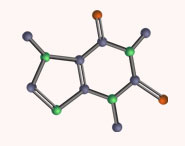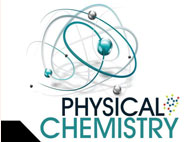


 علم الكيمياء
علم الكيمياء 
 الكيمياء التحليلية
الكيمياء التحليلية 
 الكيمياء الحياتية
الكيمياء الحياتية 
 الكيمياء العضوية
الكيمياء العضوية 
 الكيمياء الفيزيائية
الكيمياء الفيزيائية
 الكيمياء اللاعضوية
الكيمياء اللاعضوية 
 مواضيع اخرى في الكيمياء
مواضيع اخرى في الكيمياء
 الكيمياء الصناعية
الكيمياء الصناعية |
أقرأ أيضاً
التاريخ: 10-7-2018
التاريخ: 27-8-2019
التاريخ: 2023-08-21
التاريخ: 29-9-2020
|
A few simple compounds are called by trivial names not because the systematic names are complicated, but just out of habit. We know them so well that we use their familiar names.
You may have met the compound on the right before and perhaps called it ethanoic acid, its systematic name. But in a chemical laboratory everyone would refer to this acid as acetic acid, its trivial name. The same is true for all these common substances.
Trivial names like this are often long-lasting, well-understood historical names that are less easy to confuse than their systematic counterparts. ‘Acetaldehyde’ is easier to distinguish from ‘ethanol’ than is ‘ethanal’. Trivial names also extend to fragments of structures containing functional groups. Acetone, acetaldehyde, and acetic acid all contain the acetyl group (MeCO-, ethanoyl) abbreviated Ac and chemists often use this organic element symbol in writing AcOH for acetic acid or EtOAc for ethyl acetate. Chemists use special names for four fragments because they have mechanistic as well as structural significance. These are vinyl and allyl, phenyl and benzyl.
Giving the vinyl group a name allows chemists to use simple trivial names for compounds like vinyl chloride, the material that polymerizes to give PVC (polyvinyl chloride) but the importance of the name lies more in the difference in reactivity (Chapter 15) between the vinyl and allyl groups.
The allyl group gets its name from garlic (Allium sp.) because it makes up part of the structure of the compounds on the right responsible for the taste and smell of garlic. Allyl and vinyl are different in that the vinyl group is attached directly to a double-bonded C=C carbon atom, while the allyl group is attached to a carbon atom adjacent to the C=C double bond. The difference is extremely important chemically: allyl compounds are typi cally quite reactive, while vinyl compounds are fairly unreactive. For some reason, the allyl and vinyl groups have never acquired organic element symbols, but the benzyl group has and it is Bn. It is again important not to confuse the benzyl group with the phenyl group: the phenyl group is joined through a carbon atom in the ring, while the benzyl group is joined through a carbon atom attached to the ring. Phenyl compounds are typically unreactive but benzyl compounds are often reactive. Phenyl is like vinyl, and benzyl is like allyl. We shall review all the organic element symbols you have met at the end of the chapter.



|
|
|
|
مقاومة الأنسولين.. أعراض خفية ومضاعفات خطيرة
|
|
|
|
|
|
|
أمل جديد في علاج ألزهايمر.. اكتشاف إنزيم جديد يساهم في التدهور المعرفي ؟
|
|
|
|
|
|
|
العتبة العباسية المقدسة تقيم ندوة علمية عن روايات كتاب نهج البلاغة
|
|
|